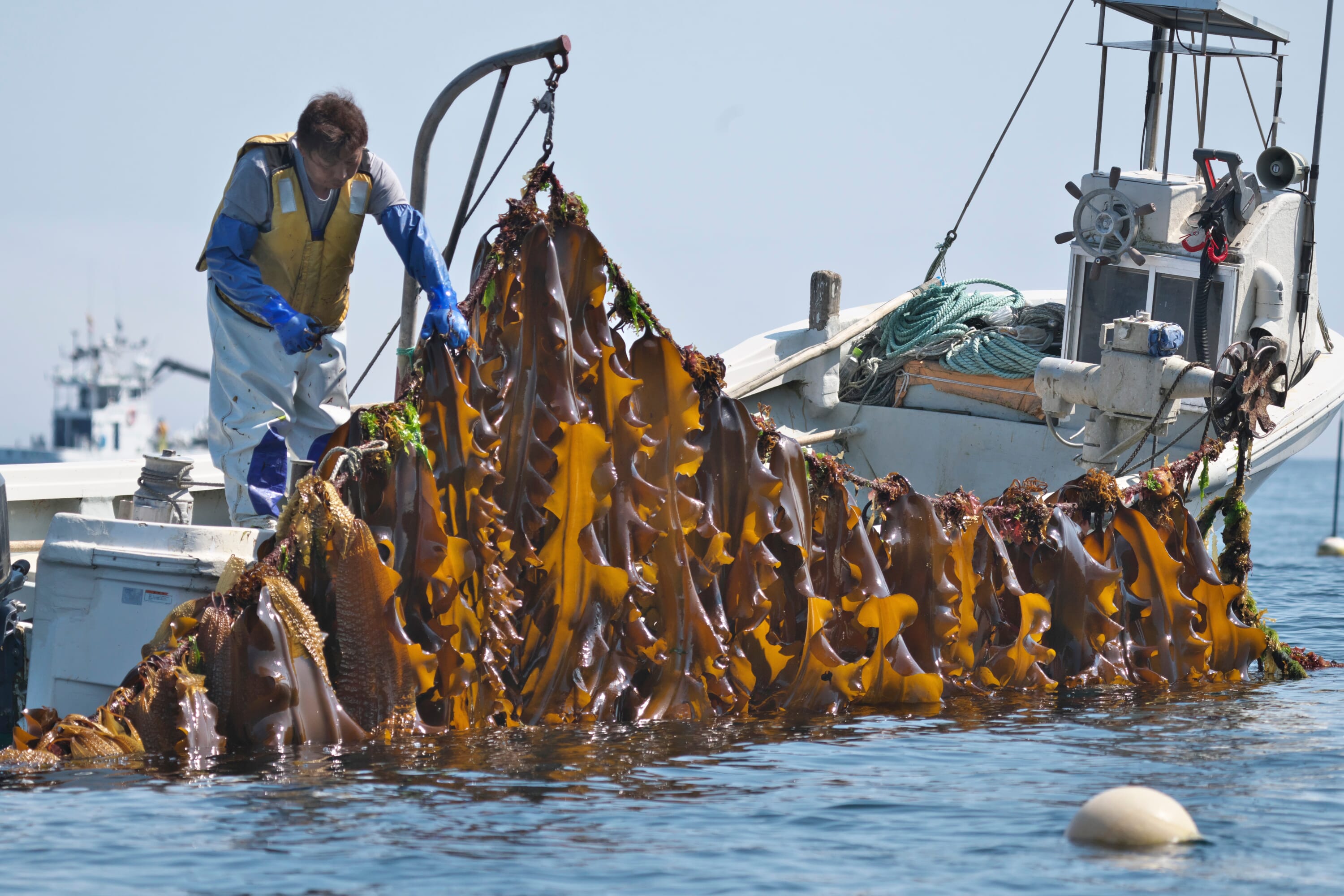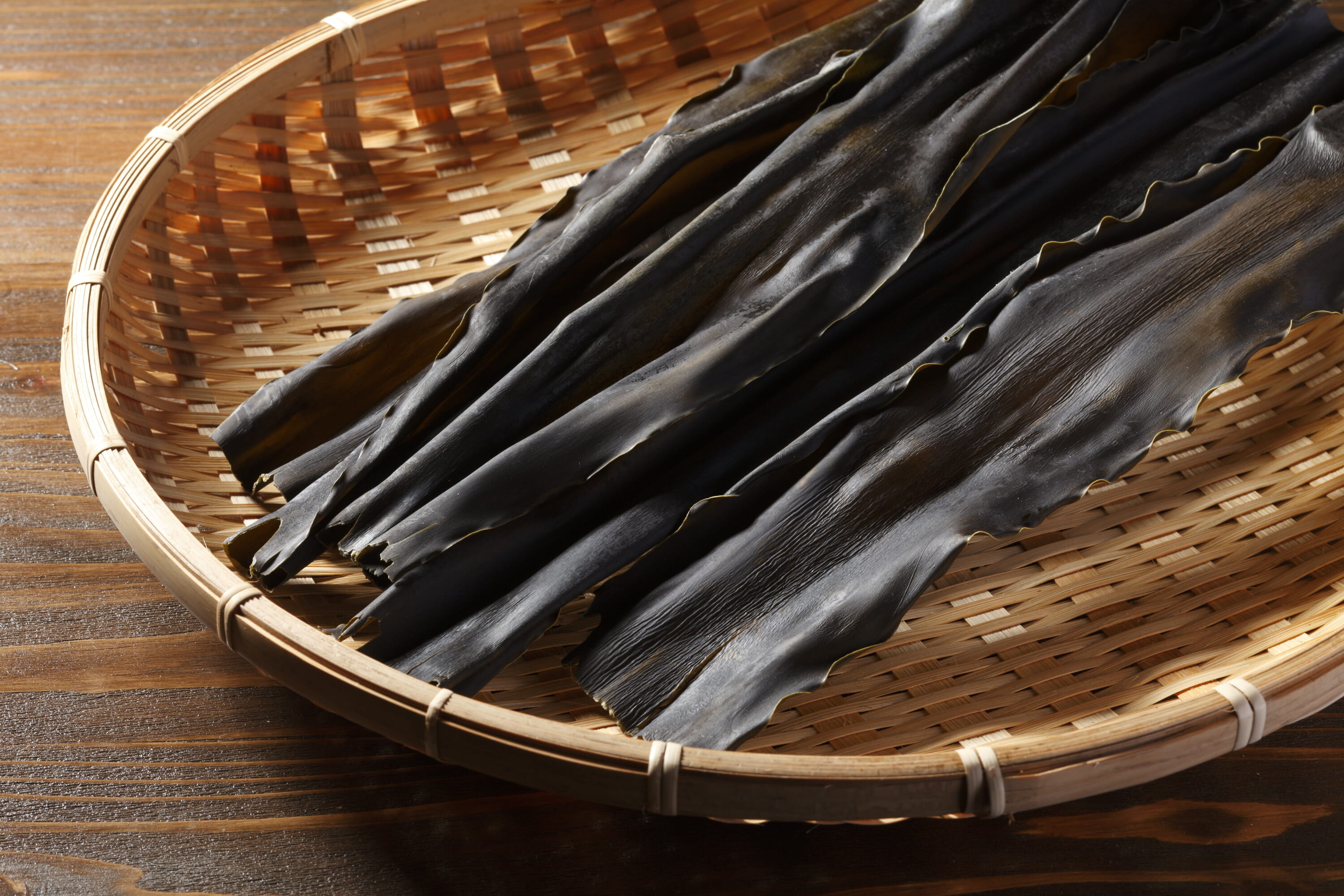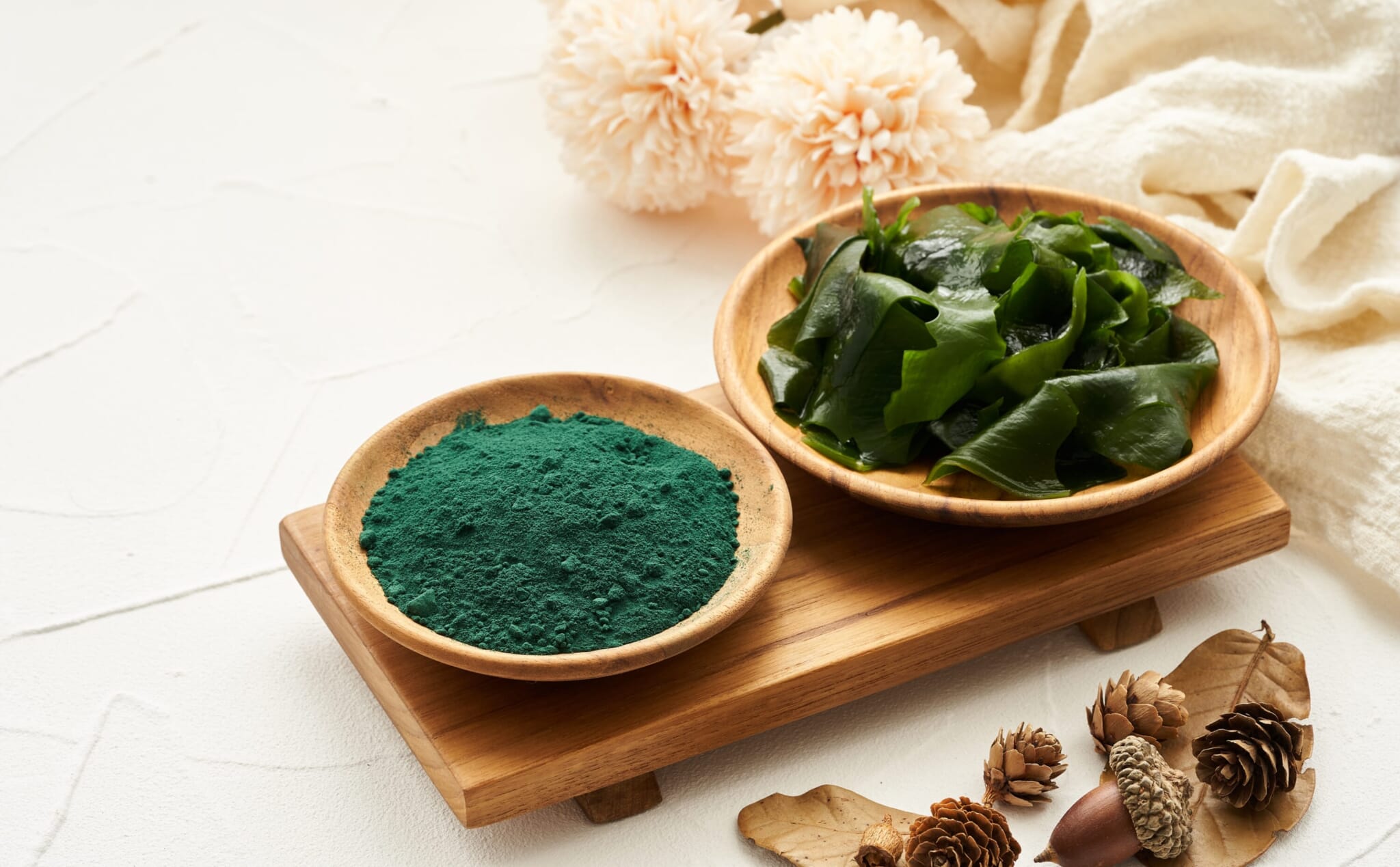Is Konbu the Same as Seaweed?
In Japan, seaweed is such a commonly used ingredient that there are far too many varieties to list. From wakame, the chewy seaweed that is soaked before using to nori, eaten as is and often found hugging onigiri, there are countless Japanese names for different types of seaweed. Sometimes referred to as “kombu” in English recipes, konbu is a type of seaweed used for flavoring soup stocks and dashi, adding that all-important umami flavor.
Simply put, konbu is an alga — a type of kelp, which in turn is a type of seaweed — that grows in the sea. It flourishes between 5 and 7 meters below the ocean surface and can reach lengths of 10 meters, which is in contrast to its average width of 60 centimeters. Consequently, it looks like a long, thick strip of orange-brown tape. It’s cultivated in strips, and then harvested between mid-July and mid-September, often by seaweed farmers in tiny, two-seater boats using long metal hooks to cut and pull the strands into the boat.
After the konbu is harvested, it’s put out to dry in the sun on days with no predicted rainfall. Nowadays, machine drying is common, as conditions can be controlled easily. Once it’s dried, the konbu is put away for several months to deepen its flavor and remove any bitterness. The resulting dark, hard strips are cut, shaped and packaged to be sold.

History of Konbu
Konbu has been used in Japanese cooking for thousands of years, with traces discovered from the Jomon period (14,000-300 BC). Its name, konbu, is believed to be derived from the Ainu word “kompu.” References to it appear in the Manyoshu, the oldest extant collection of Japanese poetry, or waka. Back then, it was thought that people would chew the konbu for both salt and minerals such as iodine and potassium.
From around the 12th century, it began to be used in Buddhist vegetarian cooking known as shojin ryori, which is prized for its high-mineral qualities and umami flavor. At the time, it started to be seen as a flavor-enhancer, though it was mainly used by monks in temples and the aristocracy. This is probably because konbu grew predominantly in Hokkaido, which meant bringing it down took time and effort. Also, as it wasn’t an established part of the Japanese diet, there was little demand.
Fast-forward 500 years to the Edo period and a viable shipping route was established from Hokkaido, the home of konbu. Thanks to this passage, also known as the “konbu road,” it became available to ordinary citizens as well, beginning a new era for konbu cooking. Freed from its upper-class confines, the ingredient was ready to be experimented on by home cooks and chefs alike.
Since the 17th century, the sea-like flavor has become a staple of Japanese cuisine, joining katsuo (skipjack tuna) to add a special depth of umami to soup stocks. Currently, Hokkaido produces 90% of Japan’s domestic konbu, each type distinguished by the area from which it originates. Rishiri, Ma and Rausu being the most common, with Ma-konbu produced close to Hokkaido, on the Japanese mainland.

What Does Konbu Taste Like?
The flavor of konbu imparts a deep, briny flavor. Adding konbu and salt to a dish or a soup gives it the distinctive taste that the seaweed is known for, adding a depth and richness that can be hard to replicate.
What is it Used For?
Konbu is generally used for soups, stocks and sauces to add layers of flavor.
It can also be eaten by itself, used as a salty seasoning for salad dishes and rice, and even pickled and turned into snacks. You can find these snacks at most convenience stores. They are individually packaged and designed to be eaten while drinking.
Admittedly, konbu as a snack can be somewhat of an acquired taste, in the same vein as umeboshi. It’s very hard and is designed to be chewed, which can take a while.
Konbu is also used as a tea, known as konbu-cha. This tea is not to be confused with Kombucha, the sweet and sour fermented drink that’s popular overseas. Both are fermented somewhat, but konbu-cha is particularly salty.

How Do I Use It?
Konbu in general needs little preparation. Take it out of the packet and boil or soak for as long as your recipe deems necessary. Sometimes the leaves will have white powder on them — this is fine and perfectly OK to eat, so you needn’t waste time scraping it off. It’s a natural product of the curing process.
Where to Find It
If you’re in Japan, buying konbu is as easy as purchasing socks. You can get it anywhere, from convenience stores and old neighborhood shops to superstores and markets, in all varieties.
If you’re abroad, you should be able to get konbu from your local Asian grocery store, or even from an online shop. It’s becoming more common as Asian cooking gains popularity, so you may even be able to find it in the ethnic section of a larger supermarket.
If you’ve been hesitant about procuring konbu before, don’t wait. It’s easy to use and relatively cheap and delicious. Add it to your dish and impress diners with your umami knowledge.
Related Posts
More Japanese ingredient guides:









